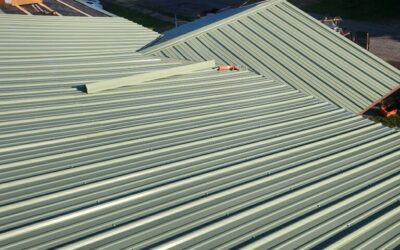Roof Leak with Spray Foam Insulation: A Comprehensive Guide
Roof leaks are among the most common and frustrating problems homeowners face. While the external signs—such as water stains, dripping, and mildew—are easy to detect, the underlying causes can be more complex. This is especially true when you have spray foam insulation installed in your roof or attic. Spray foam insulation, known for its high energy efficiency and superior sealing capabilities, can actually complicate matters when a leak occurs.
In this blog, we’ll explore the connection between roof leaks and spray foam insulation. We’ll discuss how spray foam insulation works, how roof leaks can develop, and whether spray foam insulation can help or hinder roof leak repairs. Finally, we’ll provide tips on how to handle roof leaks in homes with spray foam insulation, and discuss when to call a professional.
What is Spray Foam Insulation?
Spray foam insulation is a popular option for homeowners looking to enhance the energy efficiency of their homes. It’s made from two chemicals—usually isocyanate and polyol resin—that react together when sprayed, expanding rapidly to fill gaps, cracks, and voids in walls, attics, and roofs. This expansion creates an airtight seal that can significantly improve the insulation performance of a building.
Key Benefits of Spray Foam Insulation:
- Energy Efficiency: Spray foam helps reduce heating and cooling costs by sealing air leaks that other types of insulation can’t.
- Moisture Control: Closed-cell spray foam, specifically, is moisture-resistant and can prevent mold and mildew growth in walls and ceilings.
- Soundproofing: The dense, rigid structure of spray foam insulation can help dampen sound, making it an excellent choice for noise control.
- Durability: Spray foam is long-lasting and can remain effective for decades if properly applied.
Spray foam insulation is particularly popular in attics and roofs due to its superior air sealing capabilities and high R-value (thermal resistance), which is essential in preventing energy loss. However, it can also introduce some complications when dealing with roof leaks.
How Do Roof Leaks Develop with Spray Foam Insulation?
While spray foam insulation is designed to be moisture-resistant, roof leaks can still develop for several reasons, even in homes with this type of insulation. Here’s a breakdown of how leaks can occur:
1. Improper Installation or Application
Spray foam insulation must be applied correctly to be effective. If the foam is not sprayed evenly or fails to cover every nook and cranny of the roof deck, gaps or voids can form. These gaps can allow water to seep through, especially during heavy rain or snow.
2. Damaged Roof Materials
Even though spray foam insulation is a barrier against air and moisture, it cannot prevent damage to the roof’s structure itself. If the roof is damaged—whether from storm damage, fallen branches, or general wear and tear—water can infiltrate through these compromised areas. Unfortunately, because spray foam insulation is applied directly to the roof deck, the leak may not be immediately visible.
3. Condensation Issues
Spray foam insulation can sometimes lead to condensation problems. If there’s a significant temperature difference between the attic or roof space and the outside air, moisture can accumulate on the underside of the spray foam. Over time, this trapped moisture can create leaks in the roof or cause mold and mildew growth, even if the foam itself is not damaged.
4. Clogged Gutters and Downspouts
Spray foam insulation doesn’t address issues like clogged gutters. If your gutters are blocked with debris, water can back up and seep under the roof shingles or around the edges. Since the spray foam insulation may prevent you from easily inspecting the roof deck, it could be harder to spot these problems until significant damage has been done.
5. Lack of Ventilation
Proper attic ventilation is critical to preventing roof leaks and moisture buildup. If your attic is sealed tightly with spray foam insulation and lacks adequate ventilation, warm, moist air from your home can cause condensation to form on the roof’s underside. Over time, this condensation can lead to water leaks and damage to the roofing material.
What Are the Challenges of Dealing with Roof Leaks in Homes with Spray Foam Insulation?
When a roof leak develops in a home with spray foam insulation, the situation can be more complicated than it would be with traditional fiberglass or cellulose insulation. Here are the primary challenges homeowners face when dealing with a roof leak under spray foam insulation:
1. Difficult to Locate the Leak
One of the biggest challenges with spray foam insulation is that it can conceal the source of the leak. Since the foam seals tightly to the roof deck, water that leaks through the roof may not be immediately visible. Water could be pooling in the insulation, creating mold and mildew problems, but it may not show up as visible water damage until the problem becomes significant.
Additionally, spray foam insulation can obscure the roof’s structural components, making it difficult to inspect areas that might have sustained damage.
2. Risk of Mold and Mildew
If water leaks into an attic or roof space with spray foam insulation, the insulation itself could trap moisture and prevent it from evaporating. This moisture buildup can lead to mold, mildew, and rot in the roof deck or attic, especially if the leak is undetected for a long period.
Spray foam insulation does resist moisture, but it doesn’t eliminate the need for proper ventilation and moisture management. Without airflow, the trapped moisture can lead to hidden damage that may take years to notice.
3. Complicated Repair Process
Roof leaks in homes with spray foam insulation are often more complicated to repair than those in homes with traditional insulation. Because the foam is sprayed directly onto the roof deck, it can be difficult to remove and replace it without damaging the underlying roofing materials.
Repairing a roof leak under spray foam insulation might require cutting out sections of the foam to access the damaged roof, which can be a costly and time-consuming process.
4. Potential for Worsening Damage
Roof leaks in homes with spray foam insulation can worsen quickly because the foam traps moisture. As water seeps into the insulation, it may take longer to dry out, leading to structural damage and even compromising the foam itself. If the leak is left untreated, it could result in significant and costly repairs.
Can Spray Foam Insulation Help Prevent Roof Leaks?
While spray foam insulation can complicate roof leak repairs, it also has some properties that can help prevent roof leaks in the first place. Here’s how:
1. Sealing Gaps and Cracks
One of the primary advantages of spray foam insulation is its ability to fill gaps and cracks in the roof deck, preventing air and moisture from entering the home. This makes it less likely for water to penetrate the roof in the first place. Closed-cell spray foam, in particular, is highly resistant to water absorption and can help protect against leaks caused by small cracks or gaps.
2. Improved Insulation of Roof Decks
Spray foam insulation creates a continuous barrier that reduces the chances of moisture from reaching the roof deck. In colder climates, this can prevent ice dams, which form when snow melts on a warm roof and refreezes at the eaves, causing water to back up under shingles and leak into the home. The thermal resistance of spray foam insulation can help maintain an even roof temperature, reducing the likelihood of ice dam formation.
3. Moisture Control
Closed-cell spray foam insulation, due to its density and impermeability, can prevent moisture buildup in the roof or attic, reducing the chances of condensation-related leaks. This can help create a drier, more stable environment in areas that are prone to humidity and moisture.
How to Fix a Roof Leak in Homes with Spray Foam Insulation
If you suspect a roof leak in a home with spray foam insulation, it’s important to address it as soon as possible to prevent further damage. Here’s how to approach fixing a roof leak in a home with spray foam insulation:
1. Inspect the Roof
While spray foam insulation can make it difficult to detect a leak, you can still look for visible signs of damage, such as missing shingles or obvious holes in the roof. If you’re unsure of where the leak is coming from, use a garden hose to simulate rain and check for leaks from different areas of the roof.
2. Remove the Foam Insulation
In some cases, you may need to remove a section of the spray foam insulation to access the roof deck. This process should be done carefully to avoid damaging the underlying roofing materials. If you’re not comfortable doing this yourself, it’s best to call a professional.
3. Inspect the Roof Deck and Roofing Materials
Once you have access to the roof deck, inspect it for signs of water damage, mold, or rot. If there is significant damage, you may need to replace parts of the roof deck or shingles.
4. Repair the Leak
Once the leak source is identified, repair it using appropriate roofing materials. This could include replacing missing shingles, sealing cracks with roofing cement, or replacing damaged flashing. Once the leak is sealed, you can reapply spray foam insulation to the area.
5. Monitor for Further Issues
After the repair, monitor the area for any further signs of water infiltration. If the leak persists, it may be necessary to remove more foam and investigate further.
Conclusion: Roof Leaks and Spray Foam Insulation—A Complicated Relationship
Spray foam insulation is a fantastic solution for improving energy efficiency, but it can introduce some challenges when dealing with roof leaks. The key to handling roof leaks in homes with spray foam insulation is to act quickly and carefully. Identifying the source of the leak, addressing the root cause, and
repairing any damage to both the roofing materials and insulation are essential steps in preventing further damage.
While spray foam insulation can make it harder to detect and repair leaks, it also has protective benefits, such as moisture resistance and improved sealing. If you’re unsure about how to handle roof leaks with spray foam insulation, it’s always a good idea to consult a professional roofer or insulation expert.
 (440) 307-2060
(440) 307-2060


